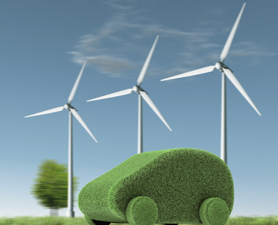You’ve likely heard the term renewable energy. It is the fastest-growing energy source around the globe, but how much do you know about it? Creating electricity with renewable sources is the way of the future, so you should brush up on some facts.
What Is Renewable Energy?
Renewable energy is energy created by using naturally replenishing resources. The resources replenish on a human timescale, so they are virtually unlimited.
Why Use Renewable Energy?
Companies like ELEVO Norway use renewable energy for a variety of environmental and economic reasons.
No Emissions
High levels of greenhouse gases are emitted when fossil fuels burn. The dangerous gases include methane, carbon dioxide, and nitrous oxide. No emissions or air pollution are released from renewable sources like wind and solar.
Healthier Air
A reduction in greenhouse gas emissions from switching to renewable energy leads to healthier air. Greenhouse gases are responsible for acid rain, smog, and ground-level ozone. While the ozone layer helps protect us, ground-level ozone can lead to throat irritation, coughing, inflamed airways, and lung damage.
Less Water
Most energy sources require water during production. About 60,000 gallons of water are required to create the steam needed for one megawatt-hour of electricity using coal or natural gas. Renewable sources use substantially less water. Solar panels occasionally need to be cleaned; therefore, they use around 20 gallons per megawatt-hour. Photovoltaic solar and wind do not require any water at all. While hydropower relies solely on water, the water is sustainably used in passing.
New Jobs
Making the switch to renewable energy creates hundreds of thousands of jobs. The massive increase occurs because renewable energy has a diverse and extensive supply chain, better profit margins, a higher intensity of labor, and requires the production of new equipment.
Lower Costs
There are financial benefits for those creating renewable energy and consumers. The cost of clean energy technology is dropping. In turn, the cost of the product also drops, and demand goes up. Consumers who make the switch don’t just enjoy lower energy prices, but many also receive government incentives for their switch.
How Is Renewable Energy Produced?
There are seven common ways to produce renewable energy. Each has its own set of benefits and drawbacks.
1. Wind
Wind can create energy with large turbines. Areas around the globe have regular access to enough wind to run turbines. Wind farms do have negative effects on flying wildlife and are primarily found in rural areas.
2. Solar
Photovoltaic and solar thermal turn the sun’s rays into usable energy. Solar is widely accessible worldwide. It can be used to supplement other energy sources or on its own grid. Unfortunately, the install of solar can be expensive, and not everyone receives direct sun exposure.
3. Hydroelectric
Underwater turbines use flowing water from dams, waterfalls, or channeling to create hydroelectric energy. It is an extremely efficient method and can generate power 24 hours a day as long as water flows. The use is restricted to areas with rivers, and damming can disrupt wildlife.
4. Geothermal
Geothermal energy harnesses the heat in the core of the earth. The heat is used to turn water into steam which powers turbines. Geothermal energy has a minimal effect on ecosystems because the equipment is primarily underground. However, earthquakes can destroy expensive geothermal plants.
5. Hydrogen
Hydrogen is a secondary byproduct produced by electricity splitting apart hydrogen and oxygen atoms in water. Hydrogen burns cleanly and can be stored in batteries. It is only renewable if the energy splitting the atoms was produced in a renewable manner.
6. Ocean
Ocean energy can be generated by thermal heat exchange between the warm surface water and cool depths or the ebb and flow of the tides. Densely populated coastal areas have easy access to this predictable source. Landlocked cities cannot take advantage of this source, and the structures disturb marine life.
7. Biomass
Biomass is made of organic materials like plants. It can be incinerated to produce heat or left to decompose to release methane. The carbon release from burning is offset by new plant growth and reforestation. Unfortunately, biomass is only renewable if plants are replaced as quickly as they are used.
There are many benefits and sources of renewable energy. It is no wonder why the market is on the rise worldwide.



